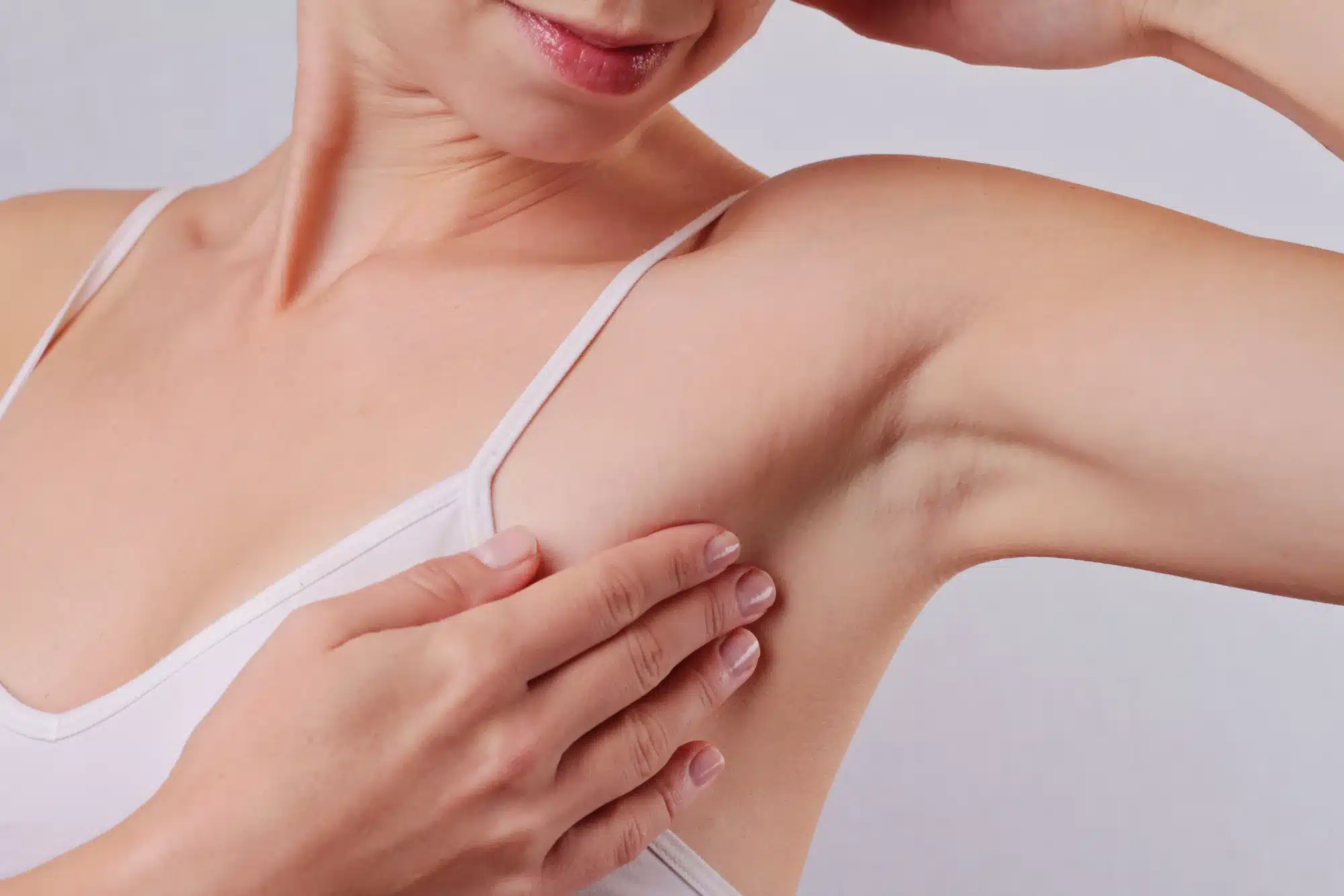
The anatomy of the armpit
The armpit, also known as the underarm or axilla, refers specifically to the area in which the arm connects to the shoulder— located on the underside of the shoulder joint. Amongst the warmest areas of the body, it is frequently preferred to be used for measuring body temperature. The axilla is comprised of various physiological structures and elements, ranging from the axillary vein and artery, to a network of nerves known as the brachial plexus, lymph nodes, and fat tissues. In fact, there are more than 20 to 40 bean-shaped lymph nodes located deep in the axilla that cannot be felt through the skin. These axillary lymph nodes are part of the body’s lymphatic system, which help to filter and transport lymph from the upper limbs, pectoral region, and the upper back. Besides that, the armpit region is also densely packed with hair follicles and apocrine sweat glands. Due to this, the armpit perspires in order to regulate the body temperature, so as to keep it within the normal range.
Despite its biological importance, axillary sweating can be a problem for some people, especially when it is accompanied by body odor. Initially, sweat that is secreted from the apocrine sweat glands is viscous, odorless, and has a pH of 6 to 7.5. Sweat then starts to emit its characteristic odor once it is degraded by bacteria. A higher concentration of bacteria, such as Corynebacterium, will only release volatile odor molecules, which results in stronger body odor. In most cases, the presence of underarm hair simply makes the odor even more pungent as bacteria, debris, secretion, and keratin accumulate on the hairs. If left uncontrolled, underarm sweating can not only affect one’s self-esteem, but it can also lead to axillary intertrigo, an inflammatory skin condition that is characterized by rash-like symptoms, such as itching, burning sensation, and pustules.
Can underarm sweating be controlled?
Most often than not, underarm sweating is usually controlled using antiperspirants. Once the antiperspirant has been applied topically, the secreted sweat immediately dissolves the antiperspirant particles and forms superficial plugs in the pores just below the skin. A feedback mechanism is relayed to the body that will temporarily reduce the release of sweat. That being said, many people don’t wish to have to apply antiperspirant every day.
Another treatment modality, which just so happens to be quickly gaining popularity, is Botox injections. This muscle relaxing product by Allergan is made of botulinum toxin type A that is extracted from Clostridium botulinum bacteria (Hall strain) and is fermented with glucose, casein hydrolysate, and yeast extract. Once injected, the toxin inhibits the secretion of acetylcholine, a neurotransmitter that is responsible for muscle contractions and the body’s release of perspiration. The treated area then stops sweating until the injected botulinum toxin wears off.
How is Botox injected into the armpit?
Botox is supplied as a sterile and vacuum-dried white powder that must be reconstituted with a suitable amount of preservative-free 0.9% sodium chloride solution before administration. The resulting transparent solution must be free from any suspending particulate(s). The underarm should then be cleansed, disinfected, and anesthetized before the prepared toxin solution is administered. Instead of injecting the toxin intramuscularly, which is usually done to treat dynamic wrinkles, a Botox injection for the armpits should be administered via a series of superficial injections just under the skin in a grid pattern. A single treatment session takes about 30 minutes to complete. The exact number of units required depends on the severity of underarm sweating.
How long are the results expected to last?
Patients will start noticing the desirable effects of Botox about a week after the initial treatment session, and the underarm area should remain sweat-free for approximately five to nine months. Botox should not be injected more often than every three months. That being said, this duration of action varies on an individual basis.
What are the side effects of Botox injections into the armpit?
Though Botox treatment is generally effective, it is not without its side effects. The commonly reported injection-site reactions include pain and bleeding, but these are mild in nature.
Botox for armpits is an affordable treatment that people can consider as an alternative to antiperspirants. Whether you forget to apply it, or you just want a more long-term solution, Botox can help. Talk to your doctor about treatment today!
Related Articles
Joanna Carr
Powerfill Injection – All About the Product
Discover Powerfill injections, their unique benefits, and how they provide lasting volume and contouring for a youthful, radiant appearance.
Joanna Carr
Orencia vs Cimzia – A Comparison of Two Biologic Therapies
Compare Orencia and Cimzia, two biologic therapies used to treat autoimmune diseases. Understand their mechanisms, benefits, side effects, and find ou...
Joanna Carr
Azzalure Side Effects: Most Common And Rare Listed Out
Interested in learning more about Azzalure Side Effects: Listing Out Most Common To Rarest? Browse Doctor Medica's comprehensive archive of blog posts...


